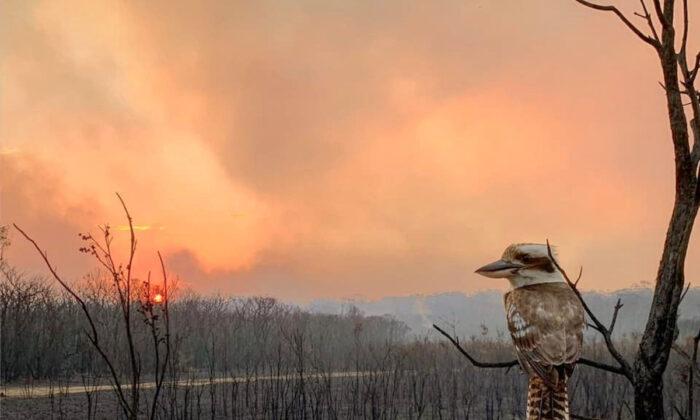Australia is home to over 750 native bird species but those numbers are facing a dramatic decline, with many of those species at higher risk of extinction.
In a first-of-its-kind study, the Australian National University (ANU) has shed light on the common traits shared by Australia’s most at-risk bird species, offering insights into the factors that heighten their threat of extinction.
This research reveals the challenges faced by these birds and the urgent need for targeted conservation efforts.
“The numbers are quite sad. By 2020, eight species were already considered extinct, and 10 percent were threatened with extinction,” ANU lead-author George Olah said.
“But if we understand more about the factors that increase extinction risk, we can better prioritise conservation efforts.
Contributing Factors
What the research identified were three significant factors contributing to the heightened extinction risk among certain bird species.“Firstly, species living only on islands were much more likely to be at risk of extinction. Think of the emblematic swift parrot and orange-bellied parrot of Tasmania, both considered critically endangered,” Mr. Olah said.
“This may be because they are less well prepared for the threats posed by introduced species like rats, cats, and other mammals.”
The ability of bird species to adapt to agricultural areas emerges as the second critical factor. Birds that can find food in agricultural landscapes are less likely to be endangered, suggesting that adaptability to human-altered environments can be a lifeline for some species.
“The more able they were to find food in agricultural areas, the less endangered they were predicted to be,” Mr. Olah said.
“If they can adapt to take advantage of new agricultural lands, perhaps after some of their habitat has been destroyed to make way for it, it’s probably a big benefit for the species.”
The third factor is the distinctiveness or “uniqueness” of the species.
Birds with few relatives within their larger family group face a disproportionate extinction risk, highlighting the importance of preserving genetic diversity.
In their research, Mr. Olah and his team developed a metric that took into account factors such as the number of related species within the broader bird family.
“The burden of extinction risk seems to disproportionately impact species that have high uniqueness,” he said.
“Some of these shared traits are also connected to form a larger pattern. For example, we know slow breeders that have a larger body size and maybe live longer generally find it harder to cope with environmental changes.”
In addition, the research indicated that evaluating conservation status solely at the species level might overlook the increased risk of extinction faced by subspecies.
To illustrate this point, Mr. Olah said “For instance, the ground parrot as a species is considered of least concern today based on the International Union for Conservation of Nature (IUCN) Red List. However, its western subspecies, found in coastal Western Australia, is considered critically endangered in Australia.”
Other Biological Risks Facing Australian Birds
The study from ANU and its research is also highlighted in the special emu issue, Emu-Austral Ornithology, dedicated to the challenges facing Australian birds.Mr. Olah contributed to another key research study within the same emu publication, led by Alex Berryman from Birdlife International.
This research dived into the evolving risks of extinction faced by Australian birds over a span of three decades, employing the Red List Index—a tool derived from the IUCN Red List to gauge extinction rates.
“More than 50 percent of the increase in extinction risk between 2010 and 2020 was caused by the 2019-2020 bushfires,” Mr. Berryman said.
“The greatest increases overall were in Queensland, South Australia, and New South Wales, where drought and wildfire effects were pronounced.
Worldwide Population Extinction
In the global context of bird extinction risks, an article study published in Forbes in February from evolutionary and behavioural ecologist, ornithologist, and science writer, “GrrlScientist” outlines that nearly half of all bird species are experiencing population declines, with one in eight threatened with extinction.The article highlights the significance of larger body size, lower fertility, and belonging to certain taxonomic groups, such as albatrosses and parrots, as traits that increase vulnerability to extinction.
The plight of Australia’s birds is severe, with the continent failing to meet its international commitments under the Global Biodiversity Framework, becoming a “hotbed of extinction” for its native bird species.
Both studies highlight the subtle nature of extinction risk, pointing out that assessments at the species level may obscure the greater vulnerability of subspecies.
This particularly applies to species that are considered the least concerning for extinction globally, while its subspecies in Australia are critically endangered, such as the ground parrot of Western Australia.


.Kakapo-1_SHANE-MCINNES-(1).600_mongbay-(1).com-(1)-300x180.jpg&w=1200&q=75)


